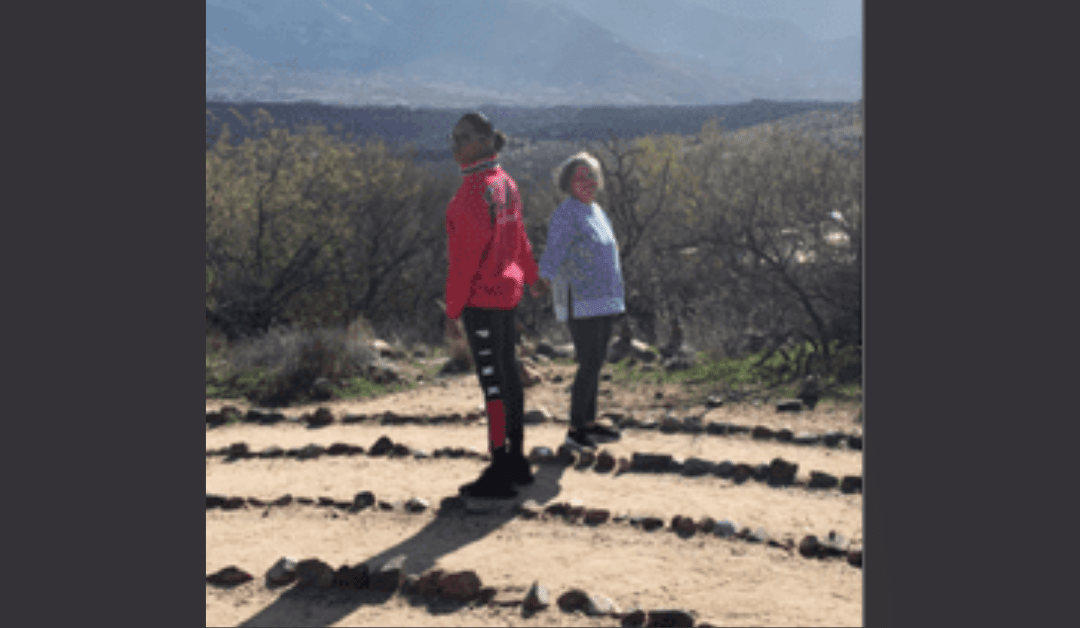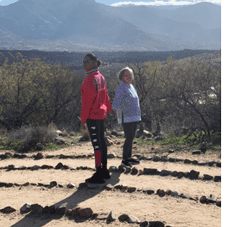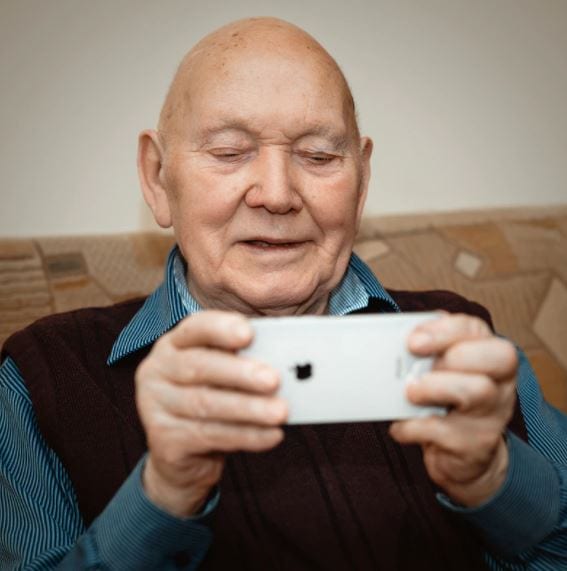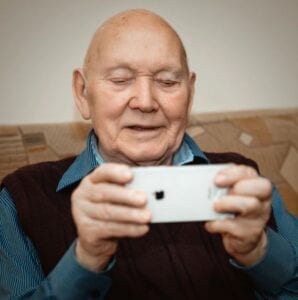
by Annettra Farrington | Jul 14, 2021 | Educational Articles
Summer’s here and who doesn’t love a barbecue? Grilling is a healthy way to eat less calories and fat though technique is key to serving a meal that is healthy in all ways.
 Chemicals called heterocyclic amines (HCAs) and polycyclic aromatic hydrocarbons (PAHs) are formed when meats are cooked using high-temperature methods and dripping fat and juices cause flames and form in smoke that lands on it. These chemicals can damage our DNA and possibly increase our risk of developing certain cancers. While research is ongoing and the jury is still out, here are some easy ways you can minimize your exposure to these potential carcinogens and still enjoy barbecuing.
Chemicals called heterocyclic amines (HCAs) and polycyclic aromatic hydrocarbons (PAHs) are formed when meats are cooked using high-temperature methods and dripping fat and juices cause flames and form in smoke that lands on it. These chemicals can damage our DNA and possibly increase our risk of developing certain cancers. While research is ongoing and the jury is still out, here are some easy ways you can minimize your exposure to these potential carcinogens and still enjoy barbecuing.
10 tips for safer summer grillin’
- Keep the grill surface clean to help prevent harmful chemicals from building up and transferring to your food.
- Use an acidic marinade containing vinegar or lemon juice and herbs like mint, garlic and rosemary to greatly reduce the formation of HCA (avoid honey or sugary marinades that can cause charring and more HCA).
 Grill fish! It has less fat and cooks faster than meat and poultry.
Grill fish! It has less fat and cooks faster than meat and poultry.- Lightly oil the grill. Don’t use lighter fluid, if possible
- Choose leaner and thinner cuts of meat that will cook faster. Trim any fat or wrap meat in foil to prevent it from dripping and producing more smoke and flare-ups.
- Partially cook larger cuts of meat inside (oven, microwave) and just finish them on the grill, flipping frequently to reduce char marks. Avoid pressing on food with a spatula which releases drippings and creates more smoke.
- Don’t char or burn meat, poultry or fish, and don’t eat any charred or blackened areas.
- Use a meat thermometer to know when food is done. Don’t cook red meat until it’s well-done. Cook at lower temperatures, even if it takes longer.
- If you use a charcoal grill, replace the charcoal after each use.
- Grill veggies and fruits! They are delicious and do not form carcinogens themselves when grilled. (You can wrap them to avoid smoke from grilled meats cooking at the same time)

by Annettra Farrington | Jun 8, 2021 | Educational Articles
 The good news is that there are about 17 million cancer survivors alive today in the United States. Better yet is the fact that there are so many long-term survivors (5 years or more after treatment). While some are able to manage the uncertainties and challenges of life brought on by cancer fairly well, for others the impacts on their physical, emotional, or even financial well-being are felt throughout survivorship.
The good news is that there are about 17 million cancer survivors alive today in the United States. Better yet is the fact that there are so many long-term survivors (5 years or more after treatment). While some are able to manage the uncertainties and challenges of life brought on by cancer fairly well, for others the impacts on their physical, emotional, or even financial well-being are felt throughout survivorship.
It’s never too late to ask for help or seek ongoing support to ease cancer’s lingering burdens and improve one’s quality of life
Physical Well-Being
Survivors are often aware they might experience a few long-term physical side effects of cancer after treatment ends, but not all understand that the main types of treatment can also cause “late effects” that may not appear until months or years later. Long-term survivors can also experience other health conditions due to the treatment received, including an increased risk for other cancers.
Knowing all the cancer treatment (s) (type/duration/dose) you received and its potential effects on your health is important. This is where having a Treatment Summary and Survivorship Care Plan comes in especially handy. It will summarize for you and your other healthcare providers (PCP and other specialists) details about your cancer diagnosis, the treatment you received (and continue to receive, if applicable) and the plan for future follow up care and monitoring for late/long- term treatment side effects, recurrence, etc. It considers the needs of the whole person.
If you did not receive this document from your oncology care team, you can request one or create one for yourself with information they provide to you. See additional resources below for more information.
Emotional Well-Being
Even for long-term survivors, anxiety can persist for many years after treatment. Often the anxiety centers around one or more of the following:
- fear of a recurrence or second cancer
- coping with other ongoing health needs and/or any long-term and late-effects of cancer treatment
- the lingering burden of cancer’s impact on household finances
- the continued strain on relationships, struggles with body image, difficulties around intimacy and sexuality.
Support groups, one-on-one counseling, exercise, relaxation techniques and other complementary and integrative therapies like yoga, tai chi, meditation, and many more, can help to manage the worry and stress and refocus one’s attention.
Some survivors experience severe anxiety, PTSD (post-traumatic stress disorder) or continued depression that significantly disrupts their lives. It is important to speak to your healthcare team and work together to find the best treatment possible for your needs.
Remember that you are not alone. No matter the degree of discomfort or distress, reach out for support so you can heal and find the joy in life you deserve.
Financial Well-being
Whether cancer treatment ends or transitions to maintenance therapy, the healthcare costs for follow-up care and late and long-term effects of treatment can be substantial, creating a burden that can be difficult for long-term survivors to overcome. Even with “good” private health insurance that adequately covers cancer treatment, the toll on one’s overall finances can have lasting effects on their lifestyle, future earning potential, and household assets. A loss of income due to the patient’s and/or other household member’s reduced or inability to work – whether temporary or permanent – can create a financial strain. Serious, unresolved financial hardship can make it difficult for survivors to maintain a consistent standard of living. Large amounts of debt can accumulate over time. Filing for bankruptcy due to medical debt is not uncommon for long-term survivors many years after their cancer diagnosis.
If you are receiving extended cancer treatment and feeling the strain of the out-of-pocket costs of your care, share your concerns with your healthcare team and inquire about your options for care and other community resources available to provide some support.
Links to Additional Resources:
Coping Magazine Survivors Guide
American Society of Clinical Oncologists Survivorship
Cancer Support Community Long-Term Health Concerns
Late effects of cancer treatment
Survivorship Care Plans: Life After Cancer
Survivorship Care Plans: During and After Treatment
Cancer Finances

by Annettra Farrington | Dec 9, 2020 | Educational Articles
 There is a wide variety of relaxation techniques* out there to try in addition to or to pair with your breathing exercises. Sample a few to find the one that is most helpful to you. Regular practice is the key to continued and more profound benefits.
There is a wide variety of relaxation techniques* out there to try in addition to or to pair with your breathing exercises. Sample a few to find the one that is most helpful to you. Regular practice is the key to continued and more profound benefits.
These are just a few:
- Progressive Muscle Relaxation – this technique involves tightening and then relaxing muscle groups of the body as you take slow, deep breaths, usually while lying down. You can self-guide as you work your way up your body or listen to a recording that will lead you through the exercise.
- Yoga – an ancient practice generally involving your breath and moving through different body poses which may include some meditation. There are many types and levels of yoga that can be enjoyed solo or in a group setting led by a yoga teacher. Classes of all levels can be found in your local community or online. A consistent yoga practice will yield increased benefits. Check with your doctor regarding any health conditions before beginning a new yoga practice.
- Meditation – a mind-body practice to increase your awareness of the present moment and promote calmness and relaxation. There are many different types of meditation which focus one’s attention using the breath, mantra, words or an object. Meditation can be guided (sometimes easier when getting started) or self-directed; it can be short or longer in duration. A consistent daily practice typically becomes easier over time and is highly recommended for maximum benefit.
- Visualization (also known as Guided Imagery) – focus your awareness on a pleasing and calming scenario that can be a place, a memory or sensory elements all of your choosing. You can use a guide or pick an environment of your own making.
Links:
Guided-Imagery Meditation from Memorial Sloan Kettering
Other meditations from Memorial Sloan Kettering Integrative Medicine
Gentle Yoga Poses from Memorial Sloan Kettering Integrative Medicine
Healthline’s best meditation apps for 2020
More relaxation techniques with instructions
*Relaxation techniques are generally considered safe for those who are healthy. People with serious physical or mental health problems should discuss relaxation techniques with their health care providers.

by Annettra Farrington | Nov 12, 2020 | Educational Articles
Caregiving Across the Miles
A long-distance caregiver lives an hour or more away from someone who needs care. Your support could take many forms such as connecting by phone, texts, emails and virtual visits, doing research, navigating insurance or finances online, managing the household from afar, coordinating in home care or services, visiting to relieve a primary caregiver, keeping extended family and friends in the communication loop, or even helping with expenses. Even if you can’t be there in person, your role is important and there is much you can do for your loved one no matter where you live.
such as connecting by phone, texts, emails and virtual visits, doing research, navigating insurance or finances online, managing the household from afar, coordinating in home care or services, visiting to relieve a primary caregiver, keeping extended family and friends in the communication loop, or even helping with expenses. Even if you can’t be there in person, your role is important and there is much you can do for your loved one no matter where you live.
Whether you are a new caregiver or have been in this role for some time, these suggestions can make life a little easier for everyone:
-
- Learn about your loved one’s specific cancer type (and/or other diseases), their medications and their treatments.
-
- Ask your loved one and any other caregiver(s) what you can do to help.
-
- Learn about your loved one’s specific cancer type (and/or other diseases), their medications and their treatments. This will help you to anticipate what to expect, enable you to communicate knowledgeably with your loved one, other caregivers, and the healthcare team, as well as assist in future decision making. Before hopping on to Dr. Google check out these tips on how to do research safely online and evaluate the credibility of the websites you source. The Resource Center on the Bag it website features a list of resources for every cancer type and any cancer topic.
-
- Ask your loved one and any other caregiver(s) what you can do to help. Communicating long-distance, even with text and email, is not the same as being there and can be even more challenging. It’s important that conversations are frank and clear. Actively listen to their stated needs and preferences and follow up with questions to be sure you understand. Together, create a checklist of what needs to be done (click here for examples). Be flexible. Keep in mind that your loved one’s condition will change and adaptations will be necessary as time goes by.
-
- Build a team of caregivers if it does not already exist. Take into account what everyone’s individual strengths, interests and limitations are when coordinating who will do what, from where and when. Your loved one should be a part of this important process, if possible.
-
- Get organized. Bag It’s My Companion
 Guidebook is a perfect tool to keep everything in order and in one place. Use it to store medical info, health care and personal contacts, reports/scans/labs, calendar items, insurance info, notes and questions for the doctor, track side effects and symptoms, and much more. The handy forms can be filled in by hand or use the fillable PDF format to print, save and update later, and share electronically with others as you see fit. Find the forms here. Maintaining this information and all the paperwork on an ongoing basis will make this an easy go to reference for caregivers and doctor visits alike.
Guidebook is a perfect tool to keep everything in order and in one place. Use it to store medical info, health care and personal contacts, reports/scans/labs, calendar items, insurance info, notes and questions for the doctor, track side effects and symptoms, and much more. The handy forms can be filled in by hand or use the fillable PDF format to print, save and update later, and share electronically with others as you see fit. Find the forms here. Maintaining this information and all the paperwork on an ongoing basis will make this an easy go to reference for caregivers and doctor visits alike.
-
- Offer to join your loved one’s doctor appointments virtually. The pandemic has greatly expanded the ability for health care systems to easily include caregivers by phone or video conferencing during in-person or virtual office visits.
-
- Gather information about local resources where your loved one lives. Programs and services that assist with in-home care, meals, medical equipment and aides, transportation and other needs may be available to fill some gaps or ease caregiving responsibilities of a primary caregiver.
-
- Being a long-distance caregiver brings its own unique challenges, stress and other emotions, particularly when for an extended period of time. Have your own support system in place and connect with people who understand what you are going through. This could be a caregiver support group, online community, a counselor or even a friend who has also been a caregiver.
More tips for Long-Distance Caregivers
-
- Consider a medical alert system if there is not a caregiver in the home at all times.
-
- New to caregiving? Consider attending caregiving training available through your local aging agency, AARP or other business in your local community or online. This specialized training can include helpful skills such as first aid, physical care and safety, assisting with activities of daily living, and other ways that you can be an effective caregiver in person or from afar.
-
- As a caregiver you may be eligible to take unpaid leave from your job to care for a family member under the Family and Medical Leave Act (“FMLA”). Learn about your rights here and check with your employer regarding potential coverage and FMLA policies related to your job.
-
- Check this list of apps available to help manage many aspects of caregiving.
-
- Pack a travel bag in advance and prepare your own household in the event you need to leave quickly for a few days to attend your loved one.
Helpful Tips for When You Visit Your Loved One
-
- Plan your visit to identify what you want to assess and what you hope to accomplish from a practical standpoint, but don’t forget to also set aside dedicated time to enjoy each other’s company. Do things that are fun and relaxing that are not focused on caregiving or a “to do” list. (These hours could be the ideal time to give the primary caregiver a much-needed respite for a few hours or day or two if you can swing it.)
-
- If possible, accompany your loved one to their in-person doctor appointment. Use the Bag It form My Appointment Summary Log form to note the appointment details and write down the questions to be asked (and answers received).
-
- During the appointment, get your loved one’s permission to allow the healthcare team to share medical information with you and get the necessary paperwork signed along with a copy for yourself. Exchange your contact info with the health care team and discuss the best method for future communication together.
-
- Hold a meeting with your family/caregivers. You bring a fresh perspective and may observe things that a primary caregiver does not notice day-to-day. Continue to listen carefully and be aware that other caregivers are also under tremendous pressure so emotions can run high. If you offer suggestions for more help, be specific about the types of support you are proposing. For example, having a home health aide come in each week, hiring help with yard work or other household maintenance, having groceries or prepared meals delivered, or arranging for transportation for medical appointments.
-
- If not already completed, start the conversations with your loved one and the other appropriate people to have a healthcare power of attorney and a durable power of attorney completed in the event your loved one becomes unable to speak or make decisions for themselves. While these topics can be sensitive and more than one discussion may be needed, executing these documents ensures that your loved one’s wishes will be followed. Advance health care directives are also a tremendous help for the medical team and others potentially making decisions on your loved one’s behalf if needed in the future.
-
- Take care of yourself during visits to your loved one. Get plenty of rest and set aside some time to recharge so you can be your best self with them. Remember you will not solve all the problems and have all the answers but your support, assistance and presence will no doubt mean a great deal to those you care about.
Additional Caregiving Resources:
Caregiving from a distance
Eldercare locator: Find local caregiving and support resources in your community
ASCO Answers Caregiving booklet
Family Caregiver Alliance Handbook for Long-Distance Caregivers
American Cancer Society Cancer Caregiver Resource Guide
Caregiving checklists:
AARP Prepare to Care guide
Family Caregiver Alliance Handbook for Long-Distance Caregivers
State by State Advance Directives:
https://www.aarp.org/caregiving/financial-legal/free-printable-advance-directives/

 Chemicals called heterocyclic amines (HCAs) and polycyclic aromatic hydrocarbons (PAHs) are formed when meats are cooked using high-temperature methods and dripping fat and juices cause flames and form in smoke that lands on it. These chemicals can damage our DNA and possibly increase our risk of developing certain cancers. While research is ongoing and the jury is still out, here are some easy ways you can minimize your exposure to these potential carcinogens and still enjoy barbecuing.
Chemicals called heterocyclic amines (HCAs) and polycyclic aromatic hydrocarbons (PAHs) are formed when meats are cooked using high-temperature methods and dripping fat and juices cause flames and form in smoke that lands on it. These chemicals can damage our DNA and possibly increase our risk of developing certain cancers. While research is ongoing and the jury is still out, here are some easy ways you can minimize your exposure to these potential carcinogens and still enjoy barbecuing. Grill fish! It has less fat and cooks faster than meat and poultry.
Grill fish! It has less fat and cooks faster than meat and poultry.
 The good news is that there are about 17 million cancer survivors alive today in the United States. Better yet is the fact that there are so many long-term survivors (5 years or more after treatment). While some are able to manage the uncertainties and challenges of life brought on by cancer fairly well, for others the impacts on their physical, emotional, or even financial well-being are felt throughout survivorship.
The good news is that there are about 17 million cancer survivors alive today in the United States. Better yet is the fact that there are so many long-term survivors (5 years or more after treatment). While some are able to manage the uncertainties and challenges of life brought on by cancer fairly well, for others the impacts on their physical, emotional, or even financial well-being are felt throughout survivorship. 
 There is a wide variety of relaxation techniques* out there to try in addition to or to pair with your breathing exercises. Sample a few to find the one that is most helpful to you. Regular practice is the key to continued and more profound benefits.
There is a wide variety of relaxation techniques* out there to try in addition to or to pair with your breathing exercises. Sample a few to find the one that is most helpful to you. Regular practice is the key to continued and more profound benefits.
 such as connecting by phone, texts, emails and virtual visits, doing research, navigating insurance or finances online, managing the household from afar, coordinating in home care or services, visiting to relieve a primary caregiver, keeping extended family and friends in the communication loop, or even helping with expenses. Even if you can’t be there in person, your role is important and there is much you can do for your loved one no matter where you live.
such as connecting by phone, texts, emails and virtual visits, doing research, navigating insurance or finances online, managing the household from afar, coordinating in home care or services, visiting to relieve a primary caregiver, keeping extended family and friends in the communication loop, or even helping with expenses. Even if you can’t be there in person, your role is important and there is much you can do for your loved one no matter where you live. Guidebook is a perfect tool to keep everything in order and in one place. Use it to store medical info, health care and personal contacts, reports/scans/labs, calendar items, insurance info, notes and questions for the doctor, track side effects and symptoms, and much more. The handy forms can be filled in by hand or use the fillable PDF format to print, save and update later, and share electronically with others as you see fit. Find the forms here. Maintaining this information and all the paperwork on an ongoing basis will make this an easy go to reference for caregivers and doctor visits alike.
Guidebook is a perfect tool to keep everything in order and in one place. Use it to store medical info, health care and personal contacts, reports/scans/labs, calendar items, insurance info, notes and questions for the doctor, track side effects and symptoms, and much more. The handy forms can be filled in by hand or use the fillable PDF format to print, save and update later, and share electronically with others as you see fit. Find the forms here. Maintaining this information and all the paperwork on an ongoing basis will make this an easy go to reference for caregivers and doctor visits alike.
Recent Comments